Azure Test Plans - A Comprehensive Testing Solution
 Saikiran Goud
Saikiran Goud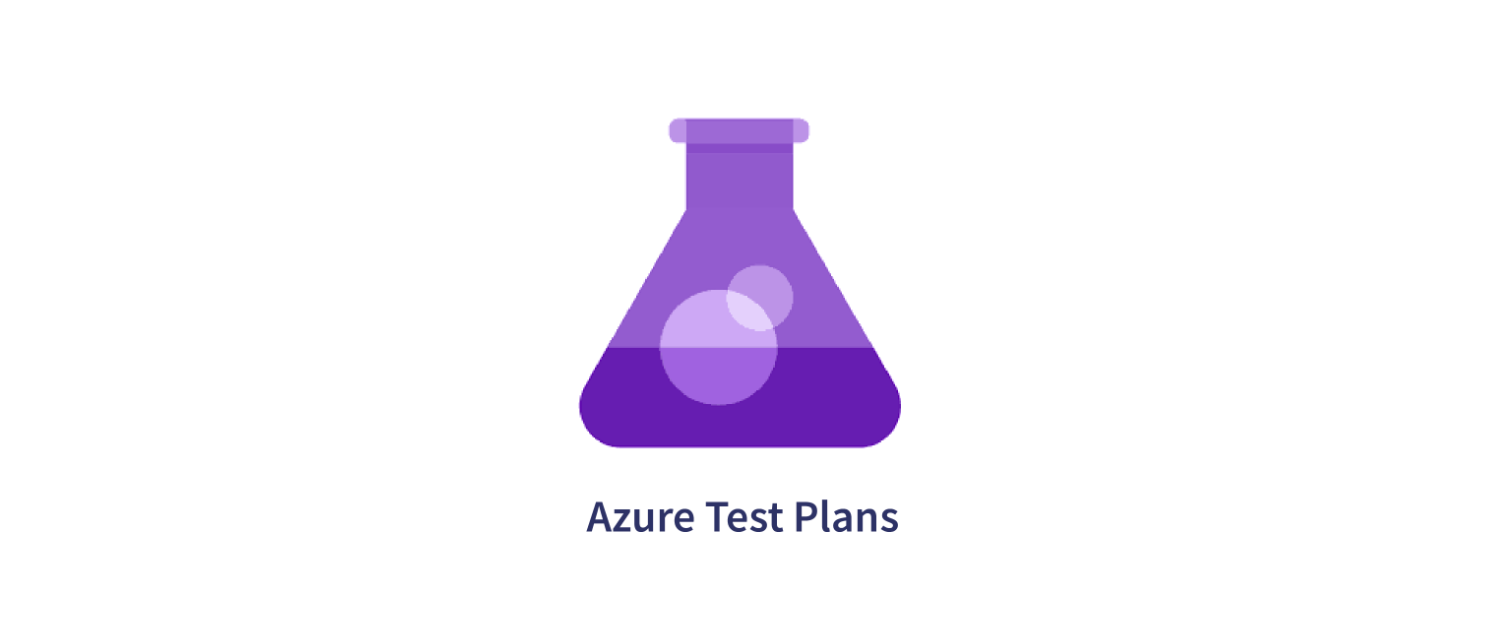
Introduction:
Azure Test Plans provides rich and powerful tools everyone in the team can use to drive quality and collaboration throughout the development process. The easy-to-use, browser-based test management solution provides all the capabilities required for planned manual testing, user acceptance testing, exploratory testing, and gathering feedback from stakeholders.
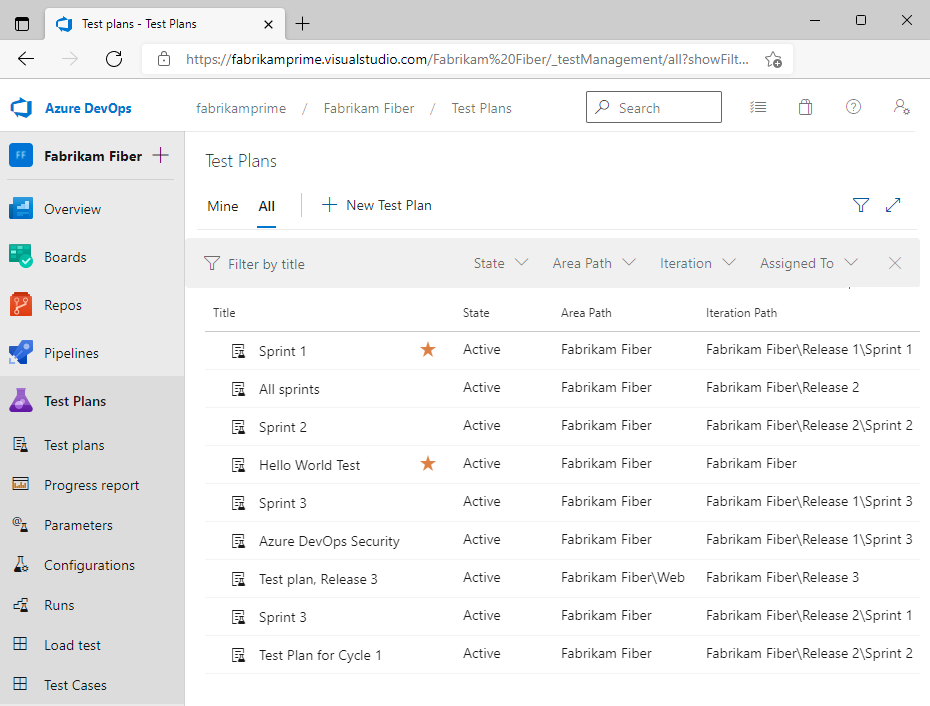
How does Azure Test Plans work?
Through a combination of browser based tools - Test plans, Progress report, Parameters, Configurations, Runs, Test tools and DevOps integration features. Azure Test Plans supports the following test objectives:
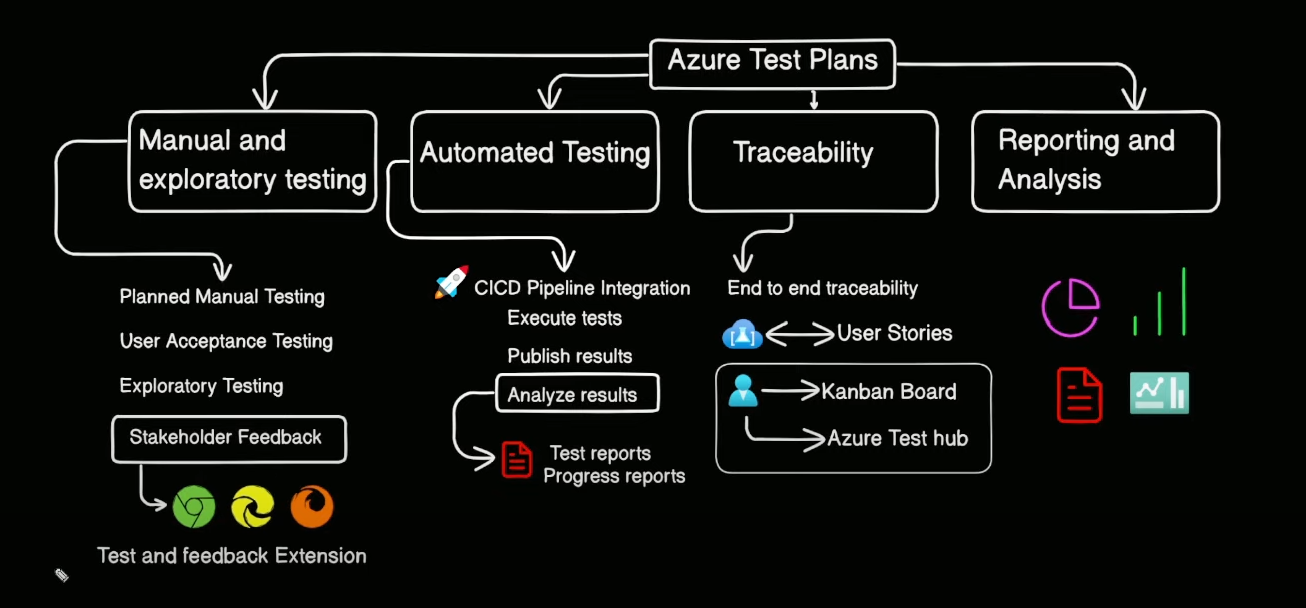
Manual and exploratory testing: Manual and exploratory testing which includes the following test activities:
Planned manual testing: Manual testing by organizing tests into test plans and test suites by designated testers and test leads.
User acceptance testing: Testing carried out by designated user acceptance testers to verify the value delivered meets customer requirements, while reusing the test artifacts created by engineering teams.
Exploratory testing: Testing carried out by development teams, including developers, testers, UX teams, product owners and more, by exploring the software systems without using test plans or test suites.
Stakeholder feedback: Testing carried out by stakeholders outside the development team, such as users from marketing and sales divisions.
Automated testing: Azure Test Plans is fully integrated with Azure Pipelines to support testing within continuous integration/continuous deployment (CI/CD). Test plans and test cases can be associated with build or release pipelines. Pipeline tasks can be added to pipeline definitions to capture and publish test results. Test results can be reviewed via built in progress reports and pipeline test reports.
Traceability: Test cases and test suites linked to user stories, features, or requirements supports end-to-end traceability. Tests and defects are automatically linked to the requirements and builds being tested, which also helps tracking the quality of requirements. Users can add and run tests from the Kanban board, or for larger teams, use the Test plans hub to define test plans and test suites. Pipeline results and the Requirements widget provide a means to track testing of requirements.
Reporting and analysis: Test result tracking and progress monitoring is supported through configurable tracking charts, test-specific widgets that you can add to dashboards, and built-in reports, such as Progress report, pipeline test result reports, and the Analytics service.
Test execution and Test tools
With the following tools, developers, testers, and stakeholders can initiate tests and capture rich data as they execute tests and automatically log code defects linked to the tests. Test your application by executing tests across desktop or web apps.
- Test Runner: A browser-based tool for testing web applications and a desktop client version for testing desktop applications that you launch from the Test plans hub to run manual tests. Test Runner supports rich data collection while performing tests, such as image action log, video recording, code coverage, etc. It also allows users to create bugs and mark the status of tests.
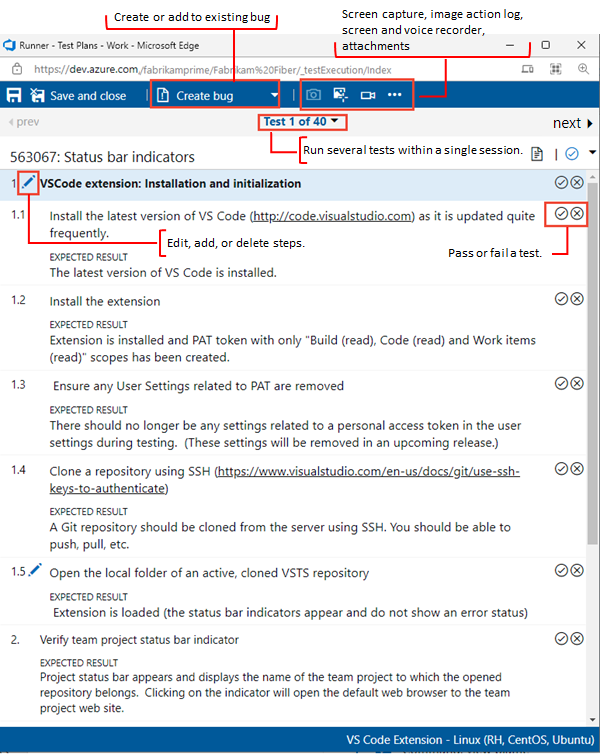
- Test & Feedback extension: A free extension to support exploratory testing that you access from Chrome, Edge, or Firefox browsers. The extension captures interactions with the application being explored through images or video and entering verbal or type-written comments. Information is captured in the Feedback Response work item type to help track response data.
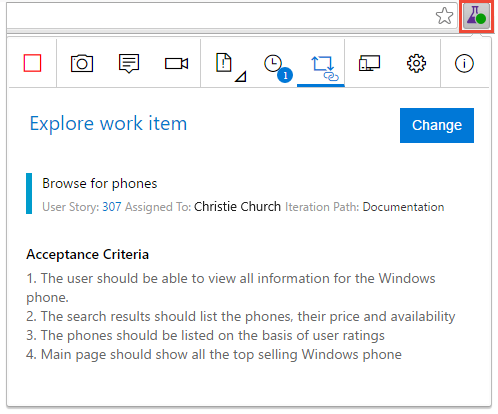
Supported Scenarios and Access requirements
Access to Azure DevOps web portal features are managed through access levels assigned to users. The three main access levels are Stakeholder, Basic, and Basic+Test plans. In addition to access levels, select features require permissions to execute. To learn more, see Manual test access and permissions.
You should have Basic+Test plan access to Execute, Create and Publish test cases.
Execute the test cases using Test Runner, you should have at least Basic access.
To run Exploratory Testing with the Feedback extension, you should have Stakeholder access**.**
The following table indicates the access-level required to exercise the associated tasks with Azure Test Plans.
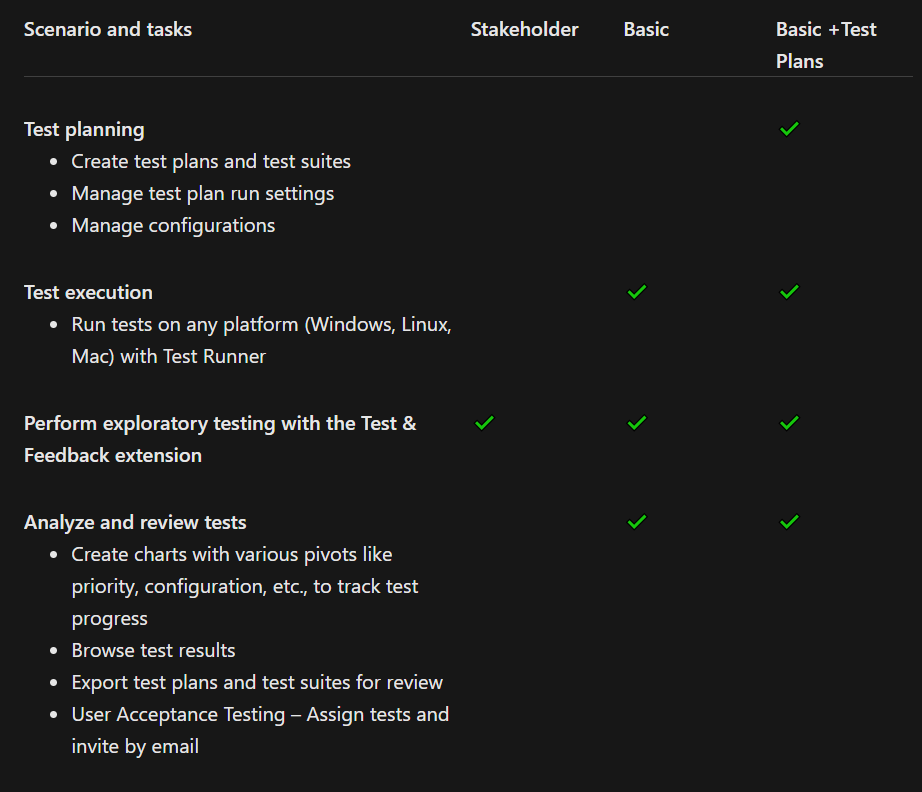
Test Plan 📋 : Group of test suites and test cases
Test Suites 📦 : Group of test cases into separate test scenarios
Test Cases ✔️ : Actual steps to test an application
Key Benefits of Azure Test Plans
Azure Test Plans provides software development teams the following benefits.
Test on any platform: With the Test Plans web portal, you can use any supported browser to access all the manual testing capabilities. It enables you to create and run manual tests through an easy-to-use, browser-based interface that users can access from all major browsers on any platform.
Rich diagnostic data collection: Using the web-based Test Runner and Test Runner client you can collect rich diagnostic data during your manual tests. This includes screenshots, an image action log, screen recordings, code coverage, IntelliTrace traces, and test impact data for your apps under test. This data is automatically included in all the bugs you create during test, making it easy for developers to reproduce the issues.
End to End traceability: Azure DevOps provides end-to-end traceability of your requirements, builds, tests and bugs with linking work items to other objects. Users can track their requirement quality from cards on the Kanban board. Bugs created while testing are automatically linked to the requirements and builds being tested, which helps you track the quality of the requirements or builds.
Integrated analytics: The Analytics service provides data that feeds into built-in reports, configurable dashboard widgets, and customizable reports using Power BI. Data tracks test plan progress and trends for both manual and automated tests. Test analytics provides near real-time visibility into test data for builds and releases. Teams can act on this data to improve test collateral to help maintain healthy pipelines.
Extensible platform. You can combine the tools and technologies you already know with the development tools that work best for you to integrate with and extend Azure DevOps. Use the REST APIs and contribution model available for the Test platform to create extensions that provide the experience you need for your test management lifecycle.
Conclusion
In conclusion, Azure Test Plans offers a comprehensive suite of user-friendly tools that empower teams to enhance quality and foster collaboration across the development lifecycle. With its intuitive browser-based interface and robust features for various testing methodologies, it facilitates seamless manual testing, user acceptance testing, exploratory testing, and stakeholder feedback collection, ensuring the delivery of high-quality software products.
Subscribe to my newsletter
Read articles from Saikiran Goud directly inside your inbox. Subscribe to the newsletter, and don't miss out.
Written by

Saikiran Goud
Saikiran Goud
Passionate DevOps Engineer with a strong foundation in CI/CD, automation, and cloud technologies.